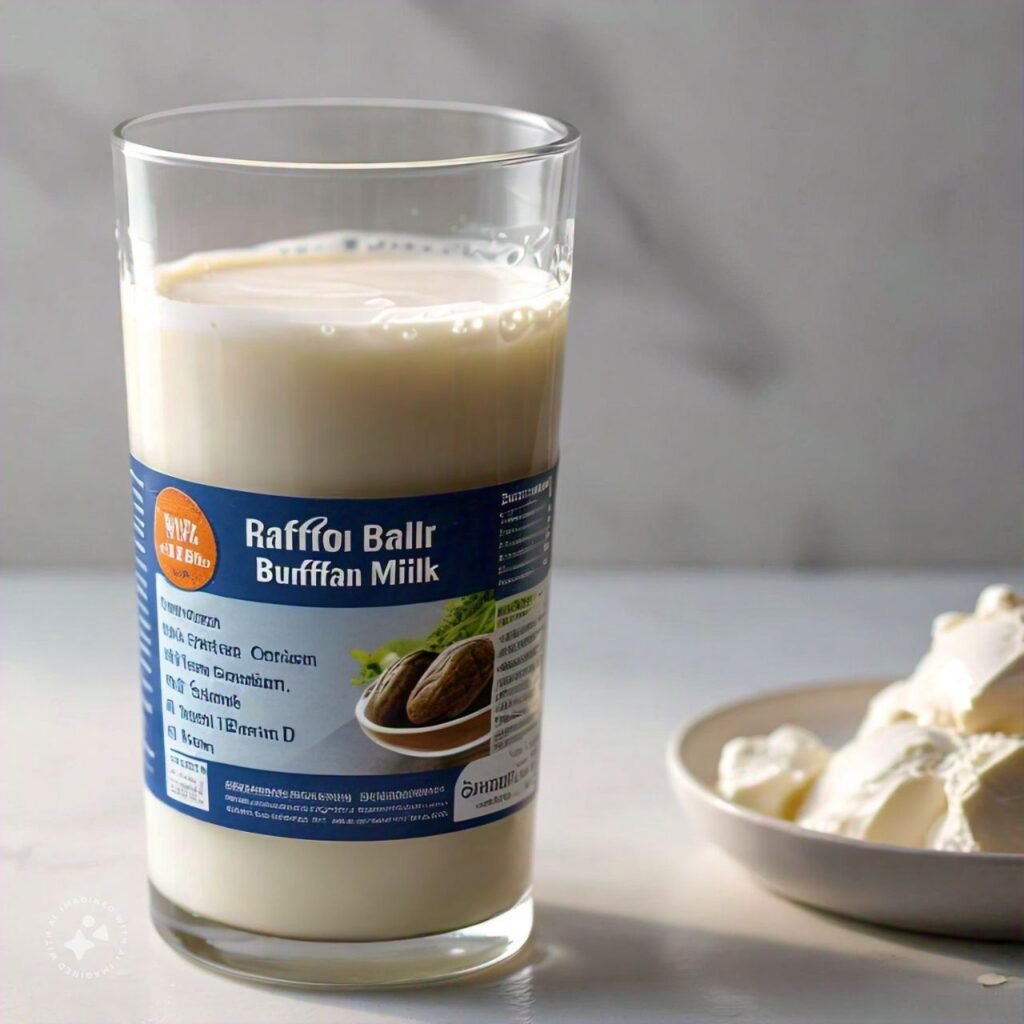
Buffalo milk has become increasingly popular due to its rich flavor, creamy texture, and impressive nutritional profile. Known for being richer and thicker than cow’s milk, buffalo milk offers numerous health benefits, making it a favorite choice in many households worldwide. In this article, we’ll cover everything you need to know about buffalo milk, from its nutritional content and health benefits to how it differs from cow’s milk and ways to incorporate it into your diet.
Introduction to Buffalo Milk
Buffalo milk comes primarily from water buffaloes and is widely consumed in many parts of Asia, especially in India, Pakistan, Nepal, and Southeast Asia. Buffaloes are known for producing milk that’s thicker, richer, and has a higher fat content than cow’s milk, which makes it an excellent ingredient for dairy products like butter, cheese, and yogurt.
Nutritional Profile of Buffalo Milk
Buffalo milk is incredibly nutrient-dense, containing higher levels of protein, calcium, and vitamins compared to cow’s milk. Here’s a breakdown of its nutritional content per 100ml:
–Calories: 100 kcal
-Protein: 3.8 grams
-Fat: 6.5 grams
-Carbohydrates: 5 grams
-Calcium: 200 mg
-Vitamin A: 60 micrograms
-Vitamin B12: 0.5 micrograms
– Magnesium: 20 mg
The high concentration of calcium and other essential minerals makes buffalo milk a nutritional powerhouse. It also contains more iron and phosphorus than cow’s milk, making it beneficial for bone health and overall vitality.

Health Benefits of Buffalo Milk
Buffalo milk’s unique composition makes it beneficial for various aspects of health. Below are some of the primary health benefits associated with consuming buffalo milk:
Supports Bone Health
With a high calcium content, buffalo milk is excellent for bone strength and development, making it especially beneficial for children and the elderly. Calcium, along with phosphorus and magnesium, plays a crucial role in maintaining bone density and preventing osteoporosis.
Boosts Immune System
Buffalo milk is packed with essential nutrients that contribute to immune health, including vitamins A, E, and C. The antioxidants in buffalo milk help to neutralize free radicals, reducing oxidative stress and supporting the immune system.
Promotes Muscle Growth and Recovery
Buffalo milk is richer in protein than cow’s milk, making it an ideal choice for those looking to build muscle or recover from intense physical activities. The amino acids in buffalo milk assist in muscle repair and growth, which is especially helpful for athletes and fitness enthusiasts.
Improves Heart Health
The healthy fats in buffalo milk, combined with its potassium content, help maintain a balanced blood pressure level. Potassium acts as a vasodilator, easing tension in blood vessels and reducing the risk of hypertension.
Better for Lactose-Intolerant Individuals
Though buffalo milk still contains lactose, some people with mild lactose intolerance find it easier to digest than cow’s milk. Additionally, its creamier texture may aid in a gentler digestive process.
Because buffalo milk has a higher calorie and fat content, it’s a preferred choice for those who wish to gain weight healthily. The extra calories and nutrients can provide a steady source of energy for underweight individuals.
Buffalo Milk vs. Cow Milk: Key Differences
While both types of milk provide numerous health benefits, buffalo milk stands out in several areas:
Buffalo milk has more fat, protein, and calcium, which makes it richer in nutrients but also higher in calories. It’s an excellent option for people who need a nutrient-dense milk alternative, while cow milk might be more suitable for those looking to limit calorie intake.
Common Uses of Buffalo Milk in Cooking
Buffalo milk is a staple in many traditional dishes, thanks to its creamy texture and high-fat content. Here are some popular ways it’s used in cooking:
–Dairy Products
Buffalo milk is commonly used to produce butter, cheese, and yogurt. Buffalo milk mozzarella, for instance, is highly regarded for its soft, creamy texture and is a staple in Italian cuisine.
Indian Sweets
In Indian cuisine, buffalo milk is a key ingredient in sweets like gulab jamun, peda, and ras malai. The richness of buffalo milk adds a unique flavor and creaminess to these desserts.
Hot Beverages
Buffalo milk’s creaminess makes it ideal for tea and coffee, providing a thicker consistency and richer taste compared to cow’s milk.
Cooking with Ghee
Buffalo milk is often used to make ghee, a type of clarified butter popular in Indian cooking. Ghee made from buffalo milk has a distinct aroma and flavor, making it a favorite choice for seasoning and cooking.
Side Effects and Allergies of Buffalo Milk
While buffalo milk offers numerous health benefits, it may not be suitable for everyone. Here are some potential drawbacks and considerations:
Higher Calorie Content
Buffalo milk has more calories than cow’s milk, which may contribute to weight gain if consumed in large amounts.
Allergies
Individuals with a milk allergy should avoid buffalo milk, as it contains proteins that may trigger allergic reactions similar to those caused by cow’s milk.
Lactose Intolerance
Although buffalo milk may be easier for some people with lactose intolerance to digest, it still contains lactose. People with severe lactose intolerance should avoid it or opt for lactose-free milk options.
Higher Fat Content
People who are managing their cholesterol levels or trying to lose weight should be mindful of the higher fat content in buffalo milk. It’s best to consult with a healthcare provider if you have specific dietary concerns.
How to Choose and Store Buffalo Milk
For the best quality, always purchase buffalo milk from a trusted source. Look for milk that’s fresh and pasteurized to reduce the risk of harmful bacteria. Buffalo milk should be stored in a refrigerator at a temperature below 5°C (41°F) to maintain its freshness. It typically has a longer shelf life than cow’s milk but should be consumed within a few days once opened.
Frequently Asked Questions
Can buffalo milk be used as a substitute for cow’s milk in recipes
Yes, buffalo milk can generally be used in place of cow’s milk, although it may result in a creamier and thicker texture.
Is buffalo milk suitable for children
Yes, buffalo milk is rich in calcium and protein, which are essential for children’s growth and development. However, it’s best to consult with a pediatrician.
Is buffalo milk more environmentally friendly than cow’s milk
The environmental impact of milk production depends on factors like farming practices, animal diet, and land use. However, buffalo milk production generally has a lower carbon footprint than large-scale dairy farming for cow milk.
Conclusion
Buffalo milk is a nutrient-dense, creamy alternative to cow’s milk, offering numerous health benefits like improved bone health, immune support, and muscle growth. Its high calcium, protein, and mineral content make it an ideal choice for those seeking to add rich nutrients to their diet. However, buffalo milk may not be suitable for everyone due to its high-calorie and fat content, as well as potential allergies. When used appropriately, buffalo milk can be an excellent addition to a balanced diet, supporting various aspects of health.





